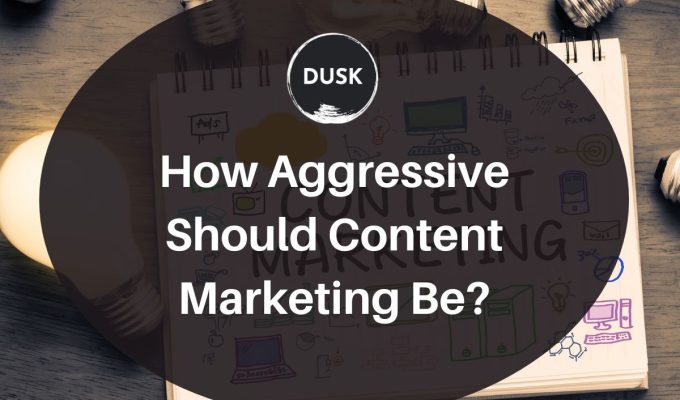For a long time now, content marketing has not only meant the implementation of texts and images on a website. Ideally, SEO-optimized in order to be found on Google, a little added value, a “smart” CTA and a concept is ready that disseminates the desired product or service information in an appealing way.
However, creating content marketing offers numerous other advantages and countless possibilities to gain the trust of potential new customers and to keep the loyalty of existing customers. In the meantime, the potential that marketing measures offer not only to large, but also to small and medium-sized companies, has become part of the company’s own advertising strategy.
In the course of time, however, the style of the various advertising measures has changed, as the reaction of customers has also changed. Extremely aggressive marketing is increasingly seen by most customers as penetrative and annoying. Commercial breaks on television, screaming and repetitive radio advertisements and huge posters on the streets are increasingly being ignored and avoided.
For several years now, not only large corporations, but also small and medium-sized companies have been relying on well-thought-out content marketing to make their company more attractive to website visitors and more appealing to users.
And this is exactly where content marketing comes into play:
This form of inbound marketing focuses on interesting content and is less aggressive than traditional and commercial advertising. It offers customers adequate added value and helps intensively to establish one’s own products or services on the market and to generate leads. In addition, high-quality content marketing contributes to long-term customer loyalty.
By and large, content marketing pursues the same goals as conventional advertising measures: namely to encourage customers to buy. To achieve this, the companies rely on content marketing to provide interested website visitors with the necessary added value. This added value can be produced in the form of advice texts, blog posts, FAQs, videos or social media campaigns.
Don’t neglect the target audience
The target group should always be kept in mind. Because target group-specific content marketing arouses empathy and trust and, in the best case scenario, has a positive influence on customers to purchase or use a product or service.
Another strategy that works well is to create gripping or humorous stories and to package them in the product information. In this way, the target group can also be better known and ultimately expanded. Creativity is still in demand, but it should be well thought out and not too loud. Nobody wants to be yelled at on the internet. Not even for marketing purposes.
Advertise subliminally
Content marketing is also ideally suited to cleverly and subliminally placing advertising in texts or advertising campaigns. In advisory texts, for example, interesting content can be excellently combined with advertising. The interests of the buyers are put in the center and the profit of the company takes a back seat. This content often attracts more attention from customers than selfish and aggressive advertising strategies. Customers are more likely to decide against a product or service, if only if they are given the feeling that the company is driven by greed for profit.
Build up trust
Hidden purchase messages can be integrated in attractively designed texts and thus an emotional bond with the target group can be established. Customers feel that their interests and ideas are valued, they trust the products or services and are open to changes or the introduction of new products.
Further advantages of well thought-out content marketing are that there is no need for a massive advertising budget for TV spots, brochures, flyers, radio advertising or the like. A creative copywriter, photographer or videographer and the associated technology, a platform and a few ideas and background knowledge about the products and services are half the battle here.






